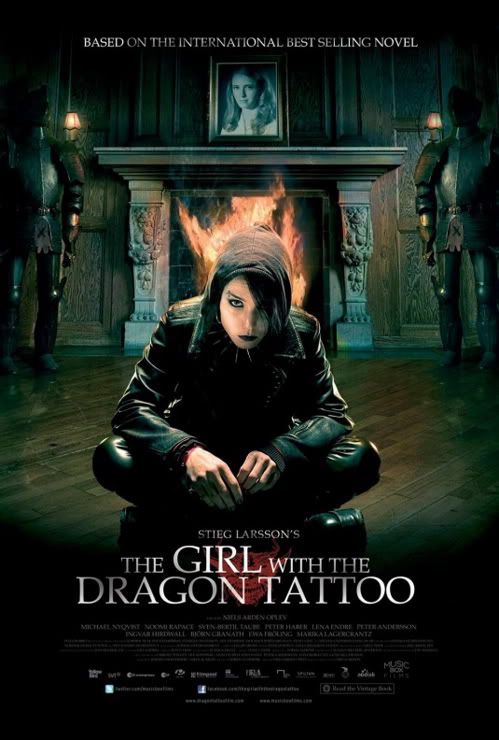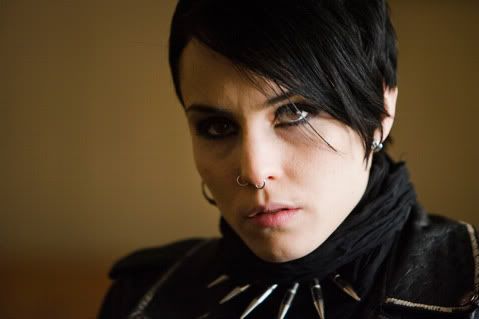
[audio:http://www.blueinkalchemy.com/uploads/amelie.mp3]
If one were to look up ‘charming’ in the dictionary, the definition would read something like this:
1. pleasing; delightful. 2. using charm; exercising magic power.
Of course, that’s an English dictionary. If one were to look up ‘charming’ in a French dictionary, I imagine you would likely see a picture of Audrey Tautou in her title role of the comedic romance Amélie. And knowing her, the picture would wink at you.
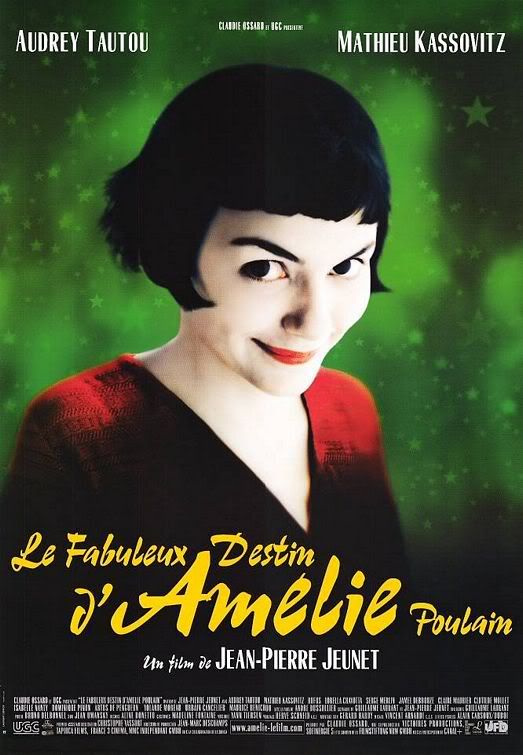
The full title of the film, translated from French, is “The Fabulous Destiny of Amélie Poulain” and we catch up with her in Paris where she works as a waitress. Her life has been somewhat odd, to say the least, and sadness and tragedy are all around her. But Amélie is unwilling to let such little things ruin her sunny disposition. A chance discovery behind a loose tile in her bathroom launches her on a transformative journey that soon sees her affecting the lives of those she encounters for the singular purpose of bringing joy. She is just as comfortable and as happy being a matchmaker as she is a prank-playing vigilante. The one life Amélie seems incapable of repairing, however, is her own — it will take someone as singularly steeped in imagination and quirkiness as herself to draw her out of her Technicolor shell. The young man who collects the discarded photographs of strangers from passport photo booths, for example.
Technicolor is no exaggeration. The color palate of this film leaps directly off of the screen. Paris is portrayed with a great deal of splendor and whimsy, though director Jean-Pierre Jeunet got a little bit of stick for not including more minorities. This is a minor quibble, compared to the volume of praise he’s rightly earned for the vibrant colors that permeate this film. Clever editing has underscored the tint of Amélie’s world without making the people look discolored. Unlike other tricks used to supersaturate a movie, like those in Revenge of the Fallen for example, these Parisians don’t look at all like they have cheap spray-on tans.
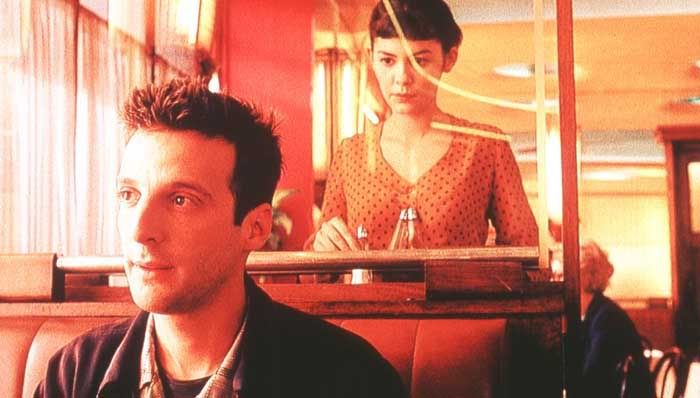
I wish I had a better shot of this moment.
As pretty as the film might be, it absolutely would not work without the singular and unforgettable performance of Audrey Tautou. She inhabits the unique character Amélie with an innocent pixiness that makes her incredibly endearing. Many of the things she does are things that might not to occur to a “normal” person, but in her mind they make perfect sense and not once does Tautou convey any sort of confusion or even hesitation when it comes to her behavior. It’s a refreshing and unapologetic blast of optimism and goodwill in a cinema and culture dominated by “escapism” that tends more towards realism than surrealism. And isn’t escapism about escaping from the real world? Or at least, shouldn’t it be?
Amélie certainly thinks so, and challenges us to do the same thing as its blithely child-like protagonist. Not necessarily the introversion and pouring salt into people’s liquor, but finding joy in the little things during the course of our everyday lives. There’s no need for Amélie to boot up an expensive multi-player shoot-em-up experience or troll the Internet in search of the human contact she’s loathe to admit needing, when she gains just as much pleasure from skipping stones, sticking her hand in a sack of grain or wondering just how many people in her neighborhood are experiencing orgasms at a particular moment. As much as it’s necessary for her to occasionally emerge from the world she’s built herself inside her head, it’s still a world full of vibrant color and unabashed joy that has a universal appeal and, as much as some marketers would have you believe otherwise, is incapable of being captured in bottle, package or pill form.
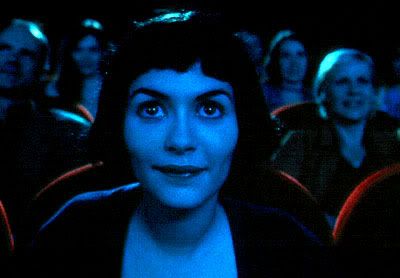
Is this image showing Amélie, or us?
This movie’s title doesn’t mean it’s just about someone named Amélie. In a way, this movie is Amélie. It has a spring in its step, an overall lightness of tone undeterred by the harsh reality it runs into on occasion and an attitude that refuses to turn things down or conform to societal norms. It never crosses that line into ‘crass’ or ‘gross’ humor that seems required of so many American comedies. Oh, there are bits about sex aplenty in Amélie and it is definitely an adult comedy, but it’s every bit as smart as it is funny. And therein lies its greatest strength, in my opinion.
Rather than take your intelligence or imagination for granted, Amélie takes it by the hand and pulls it through the streets, breathlessly telling us everything we could be seeing if we just opened our eyes. There’s a sequence in the film itself that parallels this overall sentiment. We all have blind spots, where wonders and benefits and whimsy sit unnoticed, and the moments when those spots are illuminated need not be so rare. As much as the film wants to teach us this, it’s something Amélie herself needs to learn and so we’re learning right along with her. Despite the lightness of the movie’s tone, its meaning is pretty dense, in that there is a lot of it. With only a little smile and some whimsical music from an excellent soundtrack behind her, Amélie says a great deal more in a single moment than some other films can over the course of two hours.
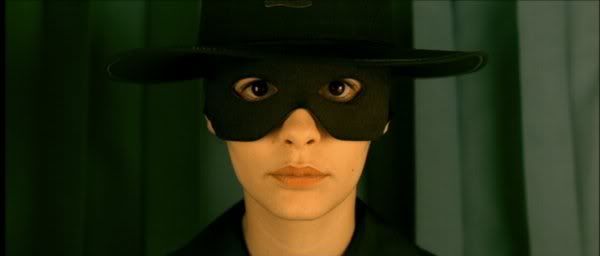
“Obtenons dangereux!”
It’s not often that a movie takes on a life of its own in one’s headspace like this. Amélie isn’t trying to make you think in some socially conscious or disturbing way, however. It doesn’t come into your head bearing portents of doom or badly-written pamphlets full of shoddy logic. She brings mulled wine and her famous plum cake, just to make you smile. It’s a deeply personal and intimate movie that has the good sense never to take itself too seriously or dwell overmuch on its subject matter. Yet, at the same time, its whimsical lightness of tone completely belies the way it affects its viewer. For my part, at least, I found myself touched, encouraged, enchanted and delighted. The sort of feeling Amélie engenders is difficult to quantify and I for one wish I could bottle the feelings it’s given me. Not because I want to make a million dollars, though the money certainly wouldn’t hurt — I just want to feel this way more often. There’s too much darkness in the world, too much dour doom and gloom. If you’re as sick of it as I am, put Amélie on your Netflix queue. I guarantee that, among other things, you’ll never crack a fresh crème brûlée the same way again.
Josh Loomis can’t always make it to the local megaplex, and thus must turn to alternative forms of cinematic entertainment. There might not be overpriced soda pop & over-buttered popcorn, and it’s unclear if this week’s film came in the mail or was delivered via the dark & mysterious tubes of the Internet. Only one thing is certain… IT CAME FROM NETFLIX.

